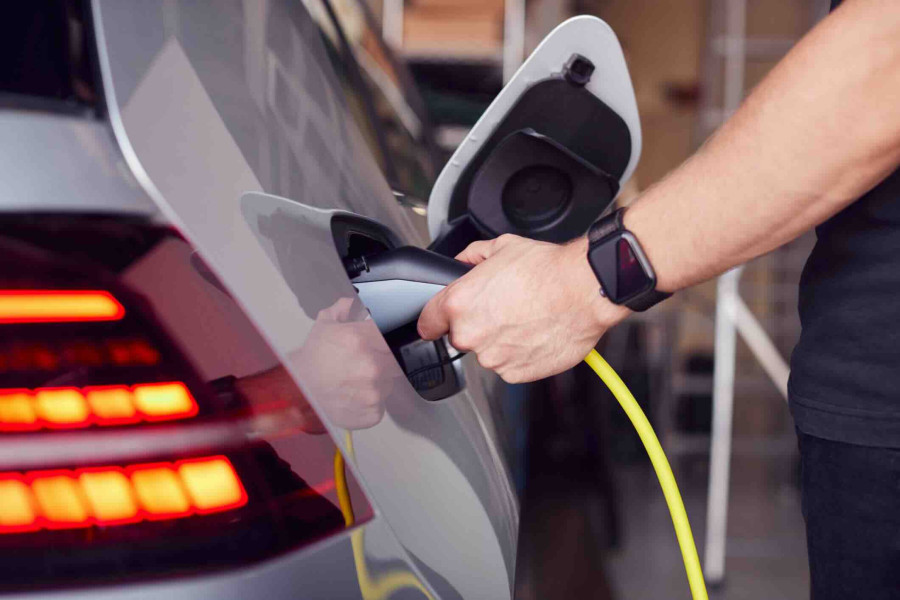The transition from gas-powered vehicles to electric ones has
demanded more than just new powertrains—it has required an overhaul in fueling
infrastructure. Early EV charging stations were little more than glorified
outlets, offering slow, static power delivery without consideration for timing,
grid stress, or user convenience. Today’s consumers, however, demand smarter,
faster, and more adaptive solutions that fit seamlessly into their dynamic
lifestyles and the complexities of modern power systems.
Technology has rapidly evolved to meet these expectations.
Smart charging systems are now equipped with integrated sensors, internet
connectivity, and advanced algorithms that determine the most efficient times
to deliver power. These solutions factor in electricity rates, grid load, and
even weather patterns to optimize charging. In essence, smart charging isn’t
just about plugging in and waiting; it’s about connecting to an intelligent
network that understands and responds to both the user’s needs and the larger
energy ecosystem.
This evolution is transforming charging from a passive to an
active component of energy consumption. With vehicle-to-grid (V2G) technologies
on the horizon, EVs will not only draw power but also supply it back to the
grid during peak demand periods. The groundwork for this transformation lies in
the robust, adaptable, and intelligent architecture of smart chargers that are
becoming the industry standard.
Grid Optimization and Load Management
One of the most critical benefits of smart charging lies in
its ability to optimize grid performance. With the proliferation of electric
vehicles, unchecked charging could strain power systems, leading to outages or
inefficient use of energy. Smart chargers can communicate with utilities to
modulate charging rates, reduce peak demand, and even suspend operations
momentarily during periods of grid stress.
Load management is especially critical in urban environments
where population density amplifies energy demands. Cities around the world are
integrating smart charging stations that dynamically adjust energy use based on
real-time grid data. These systems can stagger charging times across thousands
of vehicles, preventing spikes and ensuring a balanced load distribution.
Companies like ChargeTronix are leading this charge with
robust, modular systems designed for both scalability and reliability. Their
distributed architecture, featuring power cabinets energizing multiple
dispensers, allows for dynamic load balancing tailored to the utility’s needs. Their intelligent designs not only optimize grid usage
but also allow customization for fleet managers and commercial clients looking
to integrate with broader energy management systems.
Economic Incentives and User-Centric Design
As electricity markets become more dynamic, smart charging
offers users economic benefits by leveraging variable pricing. Time-of-use
(TOU) rates and demand response programs allow EV owners to save significantly
by charging during off-peak hours. Smart chargers automatically schedule
charging sessions based on price fluctuations, eliminating guesswork for
consumers.
These economic incentives are further enhanced by smart
charger features that provide real-time updates and detailed energy usage
reports. Mobile applications enable users to monitor costs, adjust charging
preferences, and receive notifications—all part of a user-centric design ethos
that prioritizes transparency and control.
Fleet operators and large-scale commercial clients benefit
immensely from these innovations. Smart systems can integrate with enterprise
software, offering predictive analytics and maintenance scheduling. For
businesses managing dozens or hundreds of vehicles, these tools transform
charging from a logistical headache into an orchestrated, cost-efficient
process.
Sustainability and Environmental Impact
Smart charging doesn’t just save money; it plays a pivotal
role in environmental stewardship. By aligning charging times with periods of
high renewable energy availability, smart systems help integrate green power
sources into daily consumption patterns. This ensures that EVs are charged with
cleaner energy, reducing carbon footprints on both individual and systemic
levels.
Advanced chargers can tap into real-time data on solar and
wind energy production, pausing or accelerating charging based on fluctuations
in renewable output. This symbiotic relationship between EVs and clean energy
sources is a cornerstone of future urban sustainability strategies. The more
sophisticated the charging network, the better it can harness and stabilize
renewable contributions to the grid.
Moreover, smart chargers encourage conscious consumption
through intuitive reporting. By showing users exactly how much of their
charging is powered by renewable sources and providing tips for greener usage
patterns, smart systems foster environmental awareness and responsible
behavior. The result is not just convenience, but meaningful participation in
the global effort to reduce emissions.
Future Integration: From Homes to Smart Cities
The next frontier of smart charging lies in its integration
with broader smart city initiatives. As cities embrace interconnected
infrastructure, EV chargers will become nodes in a larger ecosystem of energy management,
transportation, and urban planning. Chargers will communicate not just with
vehicles and grids, but also with traffic systems, weather stations, and public
utilities.
In residential settings, smart chargers will sync with home
energy management systems, optimizing not only EV charging but also household
energy consumption. Solar panels, battery storage, and smart appliances will
work in concert to reduce energy waste and enhance convenience. The home of the
future will treat energy as a dynamic resource, with the EV charger at the
heart of this system.
Urban planners are already envisioning charging hubs that
double as energy storage centers, public amenities, and even retail spaces.
These hubs will reflect a new urban fabric where technology, sustainability,
and convenience intersect. The transformation is well underway, and the most
forward-thinking cities are positioning themselves to reap both economic and
environmental rewards.
Challenges Ahead and the Road Forward
Despite its promise, smart charging faces several challenges.
Infrastructure expansion, particularly in underserved areas, remains a concern.
Rural regions and developing markets often lack the grid stability and
broadband connectivity required for advanced charging systems. Addressing these
disparities is essential to avoid creating energy inequities in the EV
landscape.
Cybersecurity is another significant challenge. As chargers
become more connected, they also become more vulnerable to digital threats.
Ensuring robust cybersecurity protocols, frequent firmware updates, and
real-time threat monitoring will be crucial for manufacturers and service
providers. Consumers will need confidence that their data and devices are safe
from interference.
Finally, regulatory frameworks must evolve alongside
technology. Policymakers need to craft legislation that encourages innovation
without compromising grid stability or consumer protection. Incentives for
smart charger installation, coupled with standards for interoperability and
safety, will shape the next decade of EV adoption. As the industry matures,
collaboration among automakers, energy providers, technology firms, and
government agencies will be the cornerstone of sustained progress.









